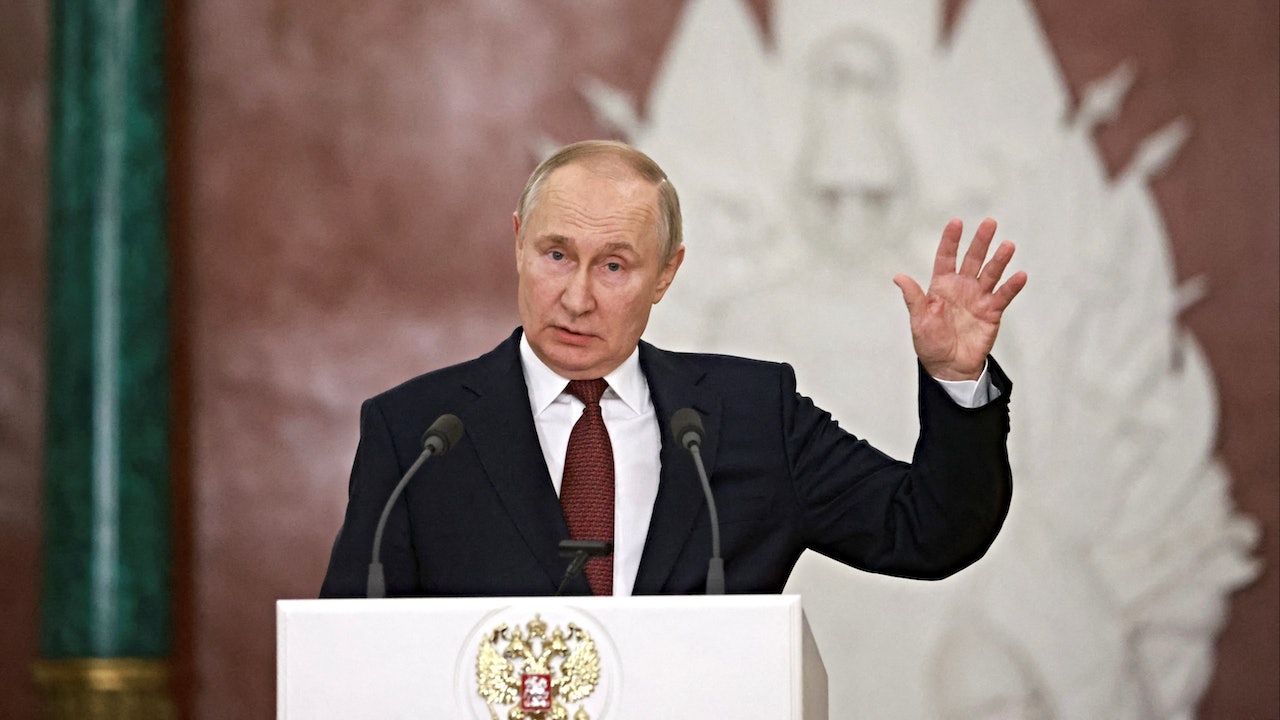The Chinese version of the "New York Times" long report "Putin's War" has been widely circulated in the Chinese public opinion field recently.
When many people infer from the fact that the Russian-Ukrainian conflict has not ended for a long time that there are problems in the Russian army’s logistics supplies, tactical command, and military coordination, the report of the New York Times, which quoted a large number of first-hand information, was written for people’s judgment. Made a solid footnote.
Interviewees ranged from ordinary soldiers, senior officials to close associates of Vladimir Putin, wealthy businessmen in contact with Putin, family members of soldiers who died in battle, etc. The materials consulted included emails, battlefield maps, military account books, propaganda instructions, letters, phone calls Records, etc., all kinds of details have tried their best to exaggerate that the combat effectiveness of the Russian army is not as good as expected, the Russian army is corrupt, and Putin is self-willed.
The New York Times report portrayed the conflict as arbitrariness by Putin without regard for the war-weariness and strength of the Russian military.
The author does not deny the professional level of the New York Times as a mainstream media in the United States.
A lot of detailed evidence reflects the cautiousness of media people.
In the face of wars such as the Russia-Ukraine conflict, most of the media get propaganda information from all parties, and it is difficult to obtain important battle situations and battle reports easily.
The "New York Times" was able to collect so much information and try to get a glimpse of the leopard, which is a timely rain for the public who knows less than the media.
The economic struggle outside the battlefield is fierce.
EU officials say the bloc has halted 90 percent of Russian oil imports.
(REUTERS)
There was no direct criticism of Russia or Putin's direct comments throughout the report.
However, the selection and superimposition of all materials revolves around bad-mouthing and criticizing Russia.
In the face of a large number of facts, people are willing to believe that Putin's arrogance reflected in the "New York Times", Putin is wrong and so on.
This is quite a professional critique.
From the perspective of international politics, the New York Times report has three points of question: First, the current material provided is not enough to fully understand the war and judge the situation of the two warring parties.
Much of the article talks about how bad things are on the Russian side.
As for what the Ukrainian side has done, what the United States and NATO have done, and what the situation is, there is no statement of the same size.
This selective factual report portrays a biased overall impression.
Second, the report played up Russia's unilateral defeat.
This is not an objective fact.
Russia's war is a special military operation, Ukraine's is a general military mobilization.
It is relatively difficult for Russia to deal with Ukraine's national power with its current investment. However, as the war expands, it is unknown whether Russia will invest more resources to win the war.
There are iron rules in war. A small country is involved in a big country confrontation and is suppressed by one side. Ukraine’s approach cannot be called wise. The war was carried out in Ukraine. In any case, it cannot be said that this war is Russia’s failure or loss.
An ECFR poll question from last year: Ukraine or Russia is the biggest obstacle to peace?
Red: Russia; Blue: Ukraine/EU/US.
(ECFR)
Third, the overall intention of the report to criticize Russia is obvious.
In the face of this war, it is meaningless to evaluate who is right and who is wrong. Now all parties have only positions, positions and starting points, not right or wrong.
When talking about right and wrong, right and wrong, there is a set of standards behind it.
Measuring the other party by your own standards will often lead to the wrong conclusion of the other party.
The root cause of the conflict between Russia and Ukraine is that NATO led by Russia, the United States and Europe competes for spheres of influence, and NATO's continuous eastward expansion has led to Russia's counterattack.
Ukraine is constantly swaying and tossing between Russia and the United States and Europe, which is the fuse of regional instability.
The Russian army brazenly entered Ukraine, pushing the conflict to an explosive peak.
Under the pattern of geopolitical confrontation that has continued since the end of the Cold War, it is difficult to say who is right and who is wrong.
There has never been a simple solution to complex problems, let alone a solution that stands on one side and overwhelms the other to criticize the other.
In this sense, the New York Times' preconceived judgment on Russia is wrong, which itself is a media attack driven by the values of the European and American discourse systems.
Dialogue with the New York Times: Is it useful to obsess over Putin's faults?
Conversation with the New York Times: This is not just Putin's war











/cloudfront-eu-central-1.images.arcpublishing.com/prisa/KMEYMJKESBAZBE4MRBAM4TGHIQ.jpg)


